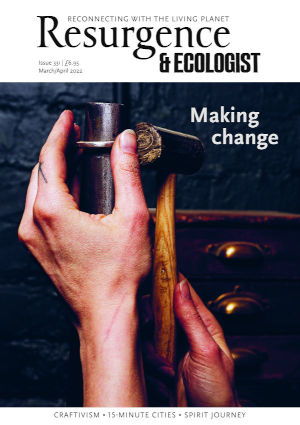This intriguing new book boldly presents ‘subtle agroecologies’ as a new field within the discipline of agro-ecology. It makes the case for adopting a worldview that diverges from the secular-materialistic worldview in two ways: it recognises the existence of an invisible dimension to Nature; and it considers the nature of this dimension as involving not only light- and sound-wave-based and magnetic-field-based phenomena, but also more ethereal aspects of consciousness and/or spirit.
Lying at the intersection of Indigenous knowledge systems, multidisciplinary advances in wave-based and ethereal studies, and the science of sustainable agriculture, subtle agroecologies superimposes a non-material dimension upon existing, materially based agro-ecological farming systems and critically examines aspects of farming and food production that are usually hidden. The invisible or non-material dimension of agriculture includes that which we cannot perceive with our five basic senses and may involve vibrational energy, ether, sentience/intelligence, and/or electromagnetic or sound waves/frequencies.
Taking an open-minded approach to explore these concepts in the field of agriculture, the book includes chapters that explore philosophy, ecology, physics and Indigenous practice. It brings together 43 authors from 12 countries, spanning the natural and social sciences in addition to the arts and humanities. Although primarily an academic book, it includes contributions from practitioners operating in the field. It recognises that it is farmers and other community members who are the true experts and decision makers about their own agro-ecosystems. Farmers and others working close to the land are also ‘interlocutors’ with the hidden half of Nature as another source of knowledge. For them, sourcing and making sense of knowledge may involve much more than standard reasoning, sensory perception, experiencing and communicating with other humans: it includes intuition, conscious intention, direct knowing and communicating with the other-than-human.
Beautifully conceived and presented with colour illustrations and detailed biographies, the book is organised into four sections. The first, ‘Transformative Epistemological, Philosophical and Theoretical Frameworks’, introduces the concept of subtle agroecologies as a means of reviving ecologically based agriculture by reclaiming whole-brain, Indigenous worldviews. The second, ‘The Intersection of Wave-based Science and Agriculture’, is based mainly on empirical studies from the applied natural sciences on technologies in commercial practice in the agri-food sector, including the effects of electromagnetic fields on plants, ethno-astronomy, agro-homeopathy and the crystallisation fingerprint method. Section 3, ‘In Search of More Embodied Methodologies’, has chapters on the art of ritual, Nature constellations, the Goethean method and sustainable yogic agriculture. It emphasises the potential of humans as sensory instruments, communicators with Nature, and conscious influencers on research and practice. The final section, ‘Voices from the Field’, incorporates contributions that explore radionics, new approaches to bee-keeping, the dynamic role of water, the practical application of subtle energy awareness in agriculture, and anecdotes about experiencing the metaphysics of agriculture.
The book masterfully achieves its first goal of providing a foundation for subtle agroecologies by introducing the discipline, explaining its relevance and potential contribution to the field of agro-ecology. It is perhaps too early to tell whether it has achieved its other goal of providing inspiration for research into the invisible dimension of agriculture. There is no doubt, however, that it opens up a wealth of new areas for debate and practice that are of deep import for agriculture in a world of climate change and biodiversity loss.
Could it be that the worldview that prioritises the physical-material dimension of reality is part of the reason for the existential challenges facing our planet and its societies? By this token, might we need a radically different worldview to get us out? Subtle Agroecologies offers a timely, readable and academically rigorous cornerstone. We urgently need to disseminate, examine and act upon the perspectives set out in this book with a view to changing our whole relationship with Nature from one of control to one of real collaboration.







